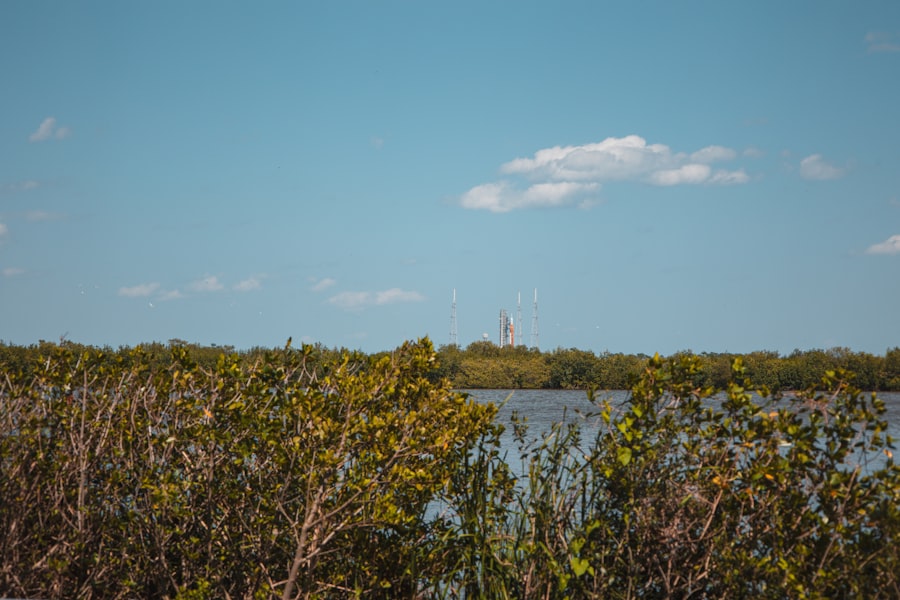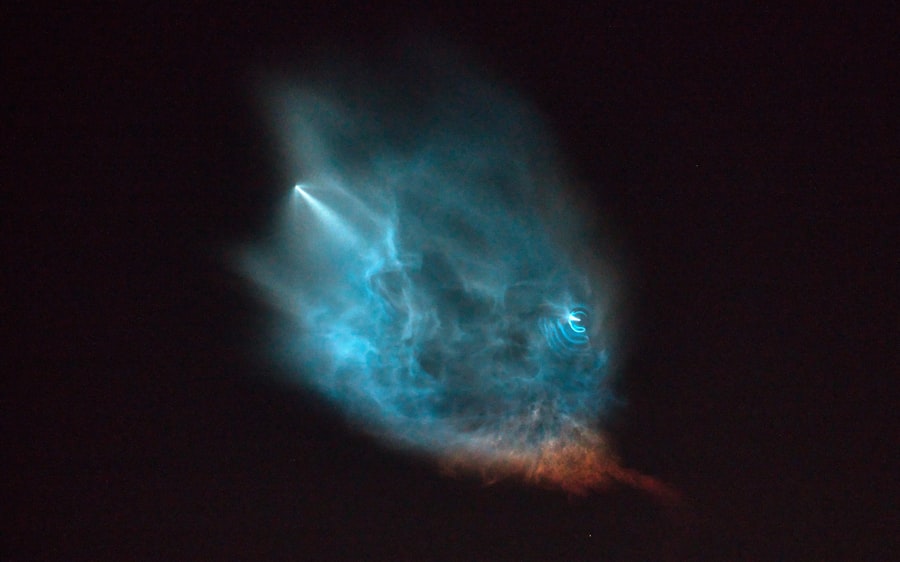SpaceX, officially known as Space Exploration Technologies Corp., was founded in 2002 by Elon Musk with the ambitious goal of reducing space transportation costs to enable the colonization of Mars. Musk’s vision was not merely to create a private aerospace manufacturer but to revolutionize space travel and make it accessible to a broader audience. The company’s first significant milestone came in 2008 when its Falcon 1 rocket became the first privately developed liquid-fueled rocket to reach orbit.
This achievement marked a turning point in the aerospace industry, demonstrating that private companies could successfully compete with established government agencies like NASA. Following the success of Falcon 1, SpaceX rapidly expanded its capabilities. The introduction of the Falcon 9 rocket in 2010 further solidified its position in the market.
This rocket was designed for reusability, a concept that would later become a cornerstone of SpaceX’s operational strategy. In 2012, SpaceX made history again by becoming the first private company to send a spacecraft, Dragon, to the International Space Station (ISS). This mission not only showcased the company’s technological prowess but also opened the door for commercial cargo resupply missions to the ISS, fundamentally changing the landscape of space logistics.
Key Takeaways
- SpaceX was founded in 2002 by Elon Musk with the goal of reducing space transportation costs and enabling the colonization of Mars.
- Today’s launch is important as it marks the first all-civilian mission to space, raising awareness and funds for St. Jude Children’s Research Hospital.
- The mission utilizes SpaceX’s Falcon 9 rocket and Crew Dragon spacecraft, showcasing the company’s advancements in reusable rocket technology.
- The crew, led by Jared Isaacman, includes Hayley Arceneaux, Sian Proctor, and Chris Sembroski, each with their own unique roles and missions.
- The mission’s impact on space exploration includes inspiring a new generation of space enthusiasts and advancing the capabilities of commercial space travel.
The Importance of Today’s Launch
Today’s launch represents a significant milestone in the ongoing evolution of space exploration and commercial spaceflight. As SpaceX continues to push the boundaries of what is possible, each launch serves as a testament to years of research, development, and innovation. This particular mission is not just another routine flight; it embodies the culmination of extensive planning and collaboration with various stakeholders, including government agencies and international partners.
The payload being launched today is critical for advancing scientific research and enhancing our understanding of space. Moreover, today’s launch is pivotal for demonstrating the reliability and efficiency of reusable rocket technology. SpaceX has pioneered this approach, which has drastically reduced costs and increased launch frequency.
By successfully launching and landing rockets multiple times, SpaceX has set a new standard in the aerospace industry. The implications of this technology extend beyond mere economics; they pave the way for more ambitious missions, including crewed flights to Mars and beyond. Each successful launch reinforces public confidence in commercial space endeavors and inspires future generations to explore the cosmos.
The Technology Behind the Mission

At the heart of today’s launch is the Falcon 9 rocket, a marvel of modern engineering that exemplifies SpaceX’s commitment to innovation. The Falcon 9 is powered by nine Merlin engines that burn RP-1 kerosene and liquid oxygen, providing a thrust capable of lifting heavy payloads into orbit. One of its most groundbreaking features is its reusability; the first stage of the rocket can land back on Earth after launch, allowing it to be refurbished and flown again.
This capability not only reduces costs but also minimizes waste, aligning with broader environmental goals. In addition to the Falcon 9, today’s mission may also involve the use of the Dragon spacecraft, which is designed for transporting cargo and crew to the ISS. The Dragon is equipped with advanced avionics and autonomous docking capabilities, allowing it to navigate and dock with precision.
Furthermore, it features a robust thermal protection system that ensures safe re-entry into Earth’s atmosphere. The integration of these technologies reflects SpaceX’s holistic approach to mission design, where each component is engineered to work seamlessly together, enhancing overall mission success.
The Crew and Their Mission
| Crew Member | Role | Mission |
|---|---|---|
| Commander | Leader | Oversee mission objectives |
| Pilot | Flight operations | Ensure safe navigation |
| Engineer | Technical support | Maintain spacecraft systems |
| Scientist | Research | Conduct experiments in space |
The crew involved in today’s launch consists of highly trained astronauts who bring a wealth of experience and expertise to their roles. Each member has undergone rigorous training that includes simulations, physical conditioning, and technical briefings to prepare for various scenarios they may encounter during their mission. Their backgrounds often include extensive experience in piloting aircraft, conducting scientific research, and working in high-pressure environments, making them well-suited for the challenges of space travel.
The mission itself is multifaceted, focusing on both scientific research and international collaboration. The crew will conduct experiments that could lead to breakthroughs in various fields such as materials science, biology, and medicine. For instance, studying how microgravity affects biological processes can provide insights into human health on Earth and inform future long-duration space missions.
Additionally, this mission fosters international cooperation by involving scientists and researchers from different countries, highlighting the collaborative spirit that is essential for advancing our understanding of space.
The Impact on Space Exploration
The implications of today’s launch extend far beyond the immediate mission objectives; they resonate throughout the entire field of space exploration. By successfully executing missions like this one, SpaceX demonstrates that commercial entities can play a vital role in advancing human presence in space. This shift has encouraged other private companies to enter the aerospace sector, fostering a competitive environment that drives innovation and reduces costs across the board.
Furthermore, successful missions contribute to a growing body of knowledge about living and working in space. As astronauts conduct experiments aboard the ISS or other platforms, they gather data that can inform future missions to destinations like Mars or even beyond. The lessons learned from these missions are invaluable for developing life support systems, radiation protection measures, and sustainable practices necessary for long-term human habitation in space.
In essence, each launch serves as a stepping stone toward humanity’s ultimate goal of becoming an interplanetary species.
Challenges and Risks of the Mission

Despite the advancements made by SpaceX and its impressive track record, every launch carries inherent risks and challenges that must be meticulously managed. One significant concern is the potential for technical malfunctions during various phases of the mission, from liftoff to re-entry. Even with extensive testing and simulations, unforeseen issues can arise that may jeopardize mission success or crew safety.
SpaceX employs rigorous safety protocols and contingency plans to mitigate these risks, but they remain an ever-present factor in aerospace operations. Another challenge lies in the environmental conditions that can affect launch windows. Factors such as weather patterns, atmospheric conditions, and even solar activity can influence whether a launch can proceed as scheduled.
For instance, high winds or thick cloud cover can delay liftoff or necessitate last-minute adjustments to flight trajectories. SpaceX’s ability to adapt quickly to changing conditions is crucial for maintaining its launch schedule while ensuring safety remains paramount.
Future Plans for SpaceX
Looking ahead, SpaceX has ambitious plans that extend well beyond today’s launch. One of its most notable projects is Starship, a fully reusable spacecraft designed for deep-space missions, including crewed flights to Mars. Starship aims to carry larger payloads than any previous spacecraft while also being capable of landing on various celestial bodies.
The development of Starship represents a significant leap forward in SpaceX’s vision for interplanetary travel and colonization. In addition to interplanetary missions, SpaceX is also focused on expanding its satellite internet service through Starlink. This project aims to provide global broadband coverage by deploying thousands of small satellites in low Earth orbit.
The revenue generated from Starlink will help fund future missions and technological advancements within SpaceX’s broader portfolio. As these initiatives progress, they will not only enhance SpaceX’s capabilities but also contribute significantly to humanity’s exploration and utilization of space.
How to Watch the Launch and Stay Updated
For those eager to witness today’s launch live, there are several ways to stay connected and engaged with the event as it unfolds. SpaceX typically streams its launches on its official website and YouTube channel, providing real-time coverage that includes pre-launch commentary, liftoff sequences, and post-launch analysis. Viewers can expect high-definition visuals that capture every moment from ignition through ascent and landing.
In addition to live streams, social media platforms such as Twitter and Instagram serve as excellent resources for updates leading up to the launch. SpaceX frequently posts behind-the-scenes content, countdowns, and important announcements regarding mission details or changes in schedule. Engaging with these platforms allows enthusiasts to immerse themselves in the excitement surrounding space exploration while staying informed about future missions and developments within the aerospace industry.


